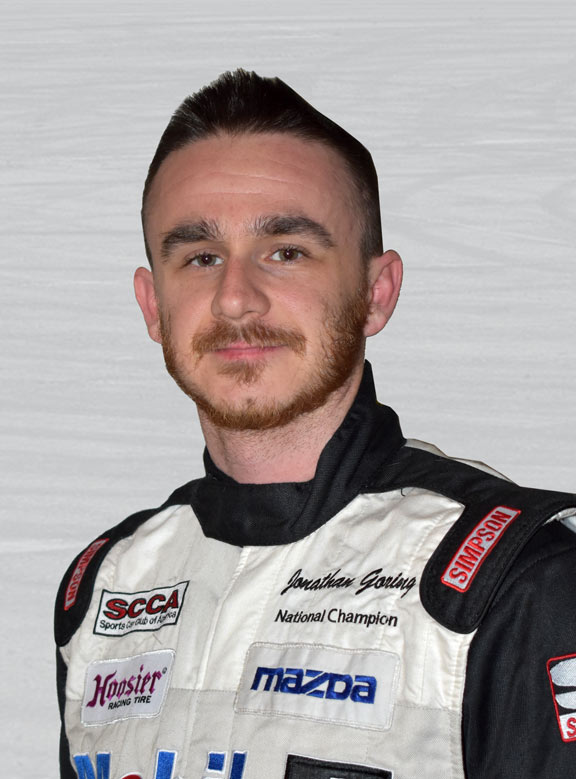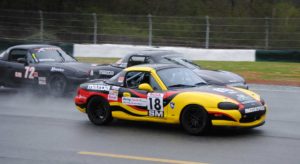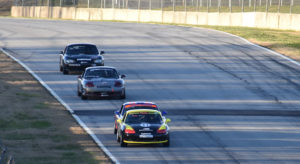Ever wonder how that new kid on the block is so fast? It’s a pretty common demographic actually. It’s that kid that’s young, doesn’t have much experience, yet is faster than a lot of competitors twice his age! He may look like a young little punk, but it’s clear as day he sure knows how to wheel a car! He is fast, consistent and doesn’t make mistakes.
How did he get so good? What does he have that I don’t? How is he so fast given his experience level? How is he so good at feeling subtle little details in the car?
Surely we could use the word “talented” to describe a driver like this, and certainly that’s a legitimate point. Some people do have a natural ability.
However, often times talent doesn’t come from dumb luck. Talent can come from learning in a specific progression of events.
This mythical, seemingly superhuman driver knows very well (and thoroughly) the answer to this question:
“Why or why didn’t the car go where I asked it to?”
And the art/science of high performance driving is that simple.
Why The Basics Are Still Too Complicated
Look, any of the basics that we teach you at any of your typical track day events are only to help you go fast and not crash.
But wait, isn’t that a good thing?
Of course, but from a true, raw driver development perspective, not necessarily.
I want to make you better at your core. Not just enable you to go faster.
And there’s a big difference between being better versus being faster.
Things such as learning the line, proper eyework through a corner, or the how to correct oversteer are great basics to learn. And they’re extremely important concepts to get!
Learning these things will make you both better AND faster. But typically it’s going to make you faster at a greater rate than it makes you better ; ) …. And this can be a problem.
Hello Intermediate run group plateau, nice to meet you.
The Golden Question
Remember this question: “Why or why didn’t the car go where I asked it to?”
In order to really answer this question, I must be extremely familiar with the physics of how to get a car to change direction. Realistically, this level of skill and deep routed understanding will only come from one thing.
The raw, uneducated, unstructured, primitive experience of bombing around in any type of motorized vehicle in any environment.
Go get a dirtbike, or go-kart, or even a 4-wheeler. Set up a track in your yard. Go around faster and faster until there’s some limiting factor as to why you can’t corner harder. Problem solve. Maybe try a different angle to the corner. Maybe try turning harder. Maybe try turning later. Try turning on power. Try jumping off the brake a little quicker.
Problem solving through first hand trial and error will develop you further as a driver than you could imagine.
These kids are good because they spend a lot of time “hooning around” on various motorized equipment.
Your car control skills bridge the gap between what you thought the car was going to do versus what it actually did.
And that, my friends, is worth more than anything about the proper line that your instructor told you.
FREE PDF GUIDE
CALIBRATING YOUR SEAT OF THE PANTS SENSOR
You’ll also receive updates and wisdom once per month. Unsubscribe at any time. We’ll never share your information.
You see, what I am having you do here is learn WHY you need to take the line that you do.
It’s not the preferred method of “how to get good” when you’re TOLD to take a specific line, but rather that you learn yourself why you should take that line.
Below is something I’d prefer a brand new track driver to learn FIRST before the concept of “The Line” is ever introduced .
Your average street driver (and hopefully you) knows that turning the steering wheel more will make the car change direction more.
However, this is only true to a point. When turning harder and harder a tire will eventually start to slide. At this point, the more we turn the steering wheel the LESS the car will actually turn.
It’s just your standard bell curve. This is at an assumed maintenance speed. For the purposes of making my point simple, I made the curve spherical. The actual shape of this curve would vary a bit in a real world scenario.
Really, a track driver’s job is to learn this transitional point at the top of the bell curve. The top of this curve is a very special place to be. This is because at this point, the actual directional change of the car matches up exactly to the amount of steering we ask for. No more and no less.
Done correctly, this is what maximizing your lateral G (grip potential) is.
Maximizing your grip is one of the 3 driver performance variables that the driver has control over (grip, radius, distance travelled) and it is especially important because it comes with a thorough understanding of how a tire slides.
Ideally, this should be learned first and foremost.
The *problem* that I see is that the line is taught before the driver understands WHY they want to take the line that they do.
To be clear, the line should be taught first IF the format of the event has a new track driver head straight out onto the track without any prior autocross/skid pad practice.
But that doesn’t mean it’s the ideal thing for driver development in my opinion.
I’d rather have my student “go hog wild” in a big empty lot or go play around in a go kart
Even with next to no coaching, if you leave a student track driver alone for an hour in a big empty lot, they’d come back with a bit more knowledge of vehicle dynamics.
And, that understanding would be deeply ingrained because they figured it out themselves.
I can tell you to look further ahead exiting a turn. And that’s great. But your brain needs to realize for itself that maybe if it gets the incoming sensory information sooner, it will be able to better process what inputs it needs to give the car.
I can tell you that you want to track out coming out of a corner. But what I’m really telling you is that if you steer less you can accelerate more.
These are things you soon realize only a few minutes into throwing a car around in an empty lot.
Your line is only as good as your understanding of why you should do it.
If the track driver can’t relate to the “why” when it comes to car placement, you won’t see them make many improvements.

ABOUT THE AUTHOR
JONATHAN GORING
From 2006 Skip Barber National Champion to 2015 Spec Miata SCCA Runoffs Champion, and with the 2008 IMSA Lites title in between, I’ve been in the racing scene for quite some time. I’ve been fortunate to race against (and beat sometimes) the best drivers in the world currently racing in various top level motorsports.
I’m very passionate about the art/science of performance driving and want to share that passion with you.
WANT TO DRIVE FASTER THAN EVER?
Join my email list for monthly articles, driving tips, exclusive announcements on new things I’m working on and wisdom delivered straight to your inbox! You can unsubscribe at any time.




